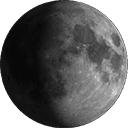Stochastic gravito-inertial modes discovered by CoRoT in the hot Be star HD51452
Author(s): Neiner, C.; Floquet, M.; Samadi, R.; et al.
Source: ASTRONOMY & ASTROPHYSICS Volume: 546 Article Number: A47 DOI: 10.1051/0004-6361/201219820 Published: OCT 2012
Context. Be stars are rapidly rotating stars with a circumstellar decretion disk. They usually undergo pressure and/or gravity pulsation modes excited by the kappa-mechanism, i.e. an effect of the opacity of iron-peak elements in the envelope of the star. In the Milky Way, p-modes are observed in stars that are hotter than or equal to the B3 spectral type, while g-modes are observed at the B2 spectral type and cooler.
Aims. We observed a B0IVe star, HD51452, with the high-precision, high-cadence photometric CoRoT satellite and high-resolution, ground-based HARPS and SOPHIE spectrographs to study its pulsations in great detail. We also used the lower resolution spectra available in the BeSS database.
Methods. We analyzed the CoRoT and spectroscopic data with several methods: CLEAN-NG, FREQFIND, and a sliding window method. We also analyzed spectral quantities, such as the violet over red (V/R) emission variations, to obtain information about the variation in the circumstellar environment. We calculated a stellar structure model with the ESTER code to test the various interpretation of the results.
Results. We detect 189 frequencies of variations in the CoRoT light curve in the range between 0 and 4.5 c d(-1). The main frequencies are also recovered in the spectroscopic data. In particular we find that HD51452 undergoes gravito-inertial modes that are not in the domain of those excited by the kappa-mechanism. We propose that these are stochastic modes excited in the convective zones and that at least some of them are a multiplet of r-modes (i.e. subinertial modes mainly driven by the Coriolis acceleration). Stochastically excited gravito-inertial modes had never been observed in any star, and theory predicted that their very low amplitudes would be undetectable even with CoRoT. We suggest that the amplitudes are enhanced in HD51452 because of the very rapid stellar rotation. In addition, we find that the amplitude variations of these modes are related to the occurrence of minor outbursts.
Conclusions. Thanks to CoRoT data, we have detected a new kind of pulsations in HD51452, which are stochastically excited gravito-inertial modes, probably due to its very rapid rotation. These modes are probably also present in other rapidly rotating hot Be stars.






